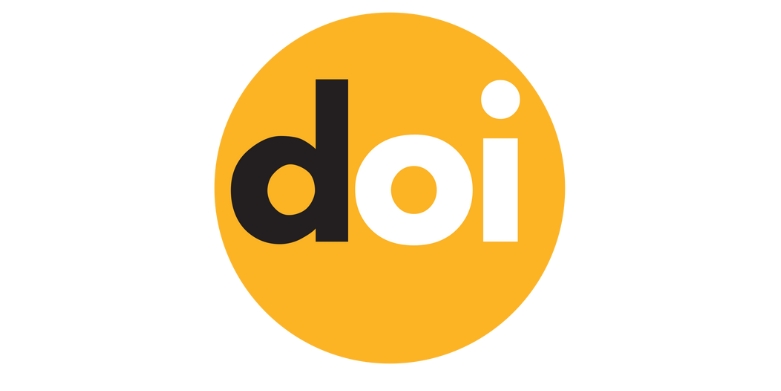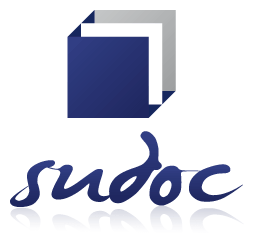E-Learning's Application in Information Science in Academic Libraries
DOI:
https://doi.org/10.63053/ijset.36Abstract
An overview of LIS e-learning projects is presented in this publication. It defines e-learning, outlines its features, and discusses its resources. The study also highlights the benefits of both e-learning and traditional schooling, comparing the two approaches. When learning is done via e-learning instead of traditional methods, a lot of time is saved. Consider classroom instruction as an example. One week, a lecture might last for an hour, and attendees would have to wait another week for the next one. The process of gaining knowledge, skills, and information using digital means—typically transmitted over the internet or electronic devices—is referred to as e-learning, short for electronic learning. Aggregating e-content is possible in e-learning environments. Services provided by the library must be available from within this setting and allow for things like the building of "virtual shelves." All e-learning environments must have context-sensitive full-text access, bibliographic management tools, and library resource discovery. The possible benefits of online learning include greater educational access, better learning opportunities, enhanced student performance and abilities, and a wider range of educational possibilities.
References
Cross, Jay. An informal history of e-learning. On the Horizon, 2004, 12(3), 103-10. DOI: https://doi.org/10.1108/10748120410555340
Jeevan, V.K.J. Computers @libraries. ESS Publications, New Delhi, 2006, 111.
https://tophat.com/glossary/e/elearning/
WR Hambercht&Co (2000) Corporate E-Learning: Exploring a New Frontier,Retrieved on [03/19/2001] from WWW: http://www.wrhambrecht.com/research/coverage/ elearning/ir/ir_explore.html
https://www.thetechedvocate.org/5-advantages-and-5-disadvantages-of-e-learning/
https://vedhasamhitha.in/types-of-e-learning-process/
Bayne, S. and Cook, J.(2006). "WebCT vs BlackBoard? An Evaluation of Two Virtual Learning Environments",http://www.ltss.bris.ac.uk/interact21/in21p04.htm,
Thomson, J. R. and Cooke, J.(2000). "Generating Instructional Hypermedia with APHID". In Hypertext 2000. pp. 248-249. DOI: https://doi.org/10.1145/336296.336492
Bruce, L. R. and Sleeman, P. J.(2000). "Instructional Design: a primer". In Greenwich, CT: Information Age Publishing, 2000
https://limbd.org/tools-and-characteristics-of-e-learning/
Imran, S. M., & P.M, N. A. (2014). E-learning Strategies for Imparting LIS Education in India: A Pragmatic Perspective of Faculty Members. Trends in Information Management (TRIM, 10(1), 23-38. Retrieved September 16, 2017.
Mani Bhusan Ray (2017), "Use of e-learning in library and information science education", International Journal of Information Movement, Vol: 2 No: 5, Page: 93-98, ISSN: 2456-0553.
Synthesis of porous graphitic carbon frombiomass by one-step method and its role in the electrode for supercapacitor, Journal Adv Mate Dev Online ISSN:1521-4095 Volume 2 Pages 141-149 R Yadav, CK Dixit 2017
“Review of Orthopedic device having gel pad with Phase Change Material” Kapil Pandey & C. K .Dixit ISSN No. 0973-4589 International Journal of Material Sciences Volume 12, Number (1) (2017) pp 112-113 2ND Author, PeereviewdIF=0.7
“Nano Technology and Nano Computing” Roshni Yadav, C.K. Dixit and Sanjeev Kumar Trivedi International Journal for Research in Applied Science and Engineering Technology Volume-5, Issue-X October, 2017, ISSN No- 2321-9653 Impact Factor 6.887, IC 45.98DOI:10.22214/ijraset.2017.10079 2ND Author, Peereviewd DOI: https://doi.org/10.22214/ijraset.2017.10079
“Application of Carbon Nanotube as a Gas Sensor”. Roshni Yadav & C.K. Dixit International Journal of Scientific and Innovative Research 2017, 5(2): 28-31. P-ISSN-2347-2189, E-ISSN 2347-4971. 2ND Author, Peereviewd
“Theoretical Study of (RS) – (4 Fluorophenyl) (pyridine-2yl) methanol using Density Functional Theory.” Sanjeev Kumar Trivedi & C.K. Dixit, PP1635-1639 Volume-6 Issue-9 Sep, 2017. International Journal of Science & Research, ISSN(Online) 2319-7064. ; UGC Listed. Impact Factor-SJIF 7.803149 3rd Author, Peereviewd Scopus IF-2.732
“Theoretical Study of (RS)- (4-Chlorophenyl) (Pyridine-2) Methanol using Density functional theory.” Sanjeev Kumar Trivedi & C.K. Dixit, PP1635-1639, Volume 4, Issue-9 Sep, 2017International Journal of Engineering & Technology, eISSN-2395-0056, pISSN 2395-0072; UGC Listed. Impact Factor-0.636 3rd Author, Peereviewd
“Effect of Temperature on Structural, Morphological and Optical Properties of ZnO Thin Films Deposited by Spray Pyrolysis Technique” Satish Kumar Verma, B. Das and C.K. Dixit International Journal of Research and Scientific Innovation (IJRSI) Volume IV, issue VII, July 2017. ISSN 2321-2705; UGC Listed.Doi No-10.51244/IJRSI 3rd Author, Pee reviewd
“Review on: Synthesis, Characterization & Potential application of Nitrogen doped Graphene” Roshani Yadav &. C. K. Dixit Journal of Science: Advanced Materials & devices; Scopus, UGC Care list. Publish by Elesevier Pub Doi.org/10.1016/j.jsamd.2017.05.007 ISSN No- 2468-3179 Volume-2,issue-2,June2017,Page-141-1492ND Author, Peereviewd Scopus IF-2.732 DOI: https://doi.org/10.1016/j.jsamd.2017.05.007
Title of Paper: “Radiology and Radiation therapy. Physics Astronomy International Journal” Pradeep Kumar & Chandra Kumar Dixit J-2018:vol-2(6):pp-547- 548.DOI:10.15406/Paij.2018.02.0013; UGC Care listed.Vol-2 pp-547-548 ISSN NO-2576-4543 IF=0.01
“Half-Metalicity in Fe doped HfO2” Chandra Kumar Dixit, Ramesh Sharma, and K.C. Bhamu Citation: AIP Conference Proceedings 1832, 120002 ( May 2017); doi: 10.1063/1.4980687 View online: http://dx.doi.org/10.1063/1.4980687; Scopus, UGC Care list. View Table of Contents: http://aip.scitation.org/toc/apc/1832/1 Published by the American Institute of Physics. Impact Factor-0.40 Impact Factor-0.40 vol-1832 ISSN No- 0094-243 (x) Print 1531-7616 (web)Scopus ) 2017 Ist Author, Scopus IF=0.423
Shahzad, K. Khan S.A.. (2023) Effect of e-learning technologies on university librarians and libraries: a systematic literature review; https://doi.org/10.1108/EL-04-2023-0076, ISSN: 0264-0473, Vol. 41, No 4, pp. 528-554. DOI: https://doi.org/10.1108/EL-04-2023-0076
Mirji, I. H. Application Of Online Ict Teaching & Services In Library And Information Science, ISSN: 2320-2882 Vol 11, No 6 pp. e868-e877.
Downloads
Published
How to Cite
Issue
Section
License
Copyright (c) 2024 International journal of Modern Achievement in Science, Engineering and Technology

This work is licensed under a Creative Commons Attribution 4.0 International License.












